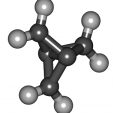
mboehmer
-
Posts
146 -
Joined
-
Last visited
Reputation Activity
-
 mboehmer got a reaction from legogris in Odroid C2 on seafloor (part II)
mboehmer got a reaction from legogris in Odroid C2 on seafloor (part II)
We are down... and modules seem to be in good shape. Let's hope the powerup will work as expected.
-
 mboehmer got a reaction from TonyMac32 in Odroid C2 on seafloor (part II)
mboehmer got a reaction from TonyMac32 in Odroid C2 on seafloor (part II)
We are down... and modules seem to be in good shape. Let's hope the powerup will work as expected.
-
 mboehmer got a reaction from lanefu in Odroid C2 on seafloor (part II)
mboehmer got a reaction from lanefu in Odroid C2 on seafloor (part II)
We are down... and modules seem to be in good shape. Let's hope the powerup will work as expected.
-
 mboehmer got a reaction from Werner in Odroid C2 on seafloor (part II)
mboehmer got a reaction from Werner in Odroid C2 on seafloor (part II)
We are down... and modules seem to be in good shape. Let's hope the powerup will work as expected.
-
 mboehmer got a reaction from Igor in New board of interest (JLD076)
mboehmer got a reaction from Igor in New board of interest (JLD076)
Starts right now... here we are.
-
 mboehmer got a reaction from TonyMac32 in New board of interest (JLD076)
mboehmer got a reaction from TonyMac32 in New board of interest (JLD076)
Starts right now... here we are.
-
 mboehmer got a reaction from TonyMac32 in Odroid C2 on seafloor (part II)
mboehmer got a reaction from TonyMac32 in Odroid C2 on seafloor (part II)
Hi all,
as a small status update on the seafloor business, here are some pictures of the new Odroid C2 based instruments which will be deployed in September/October in the northers Pacific.
Ten modules with different functionality will be deployed, all based on a standard setup of Odroid C2, TRB3sc FPGA based TDC DAQ system, one PADIWA preamp, and a modded mdedia converter serving as a fully configurable mini switch.
One of the modules carries several Hamamatsu mini spectrometers, as well as a camera, to observe bioluminescence.
Another module is targeting at muon tracking with SiPM based readout:
I have some more picture of the more "fancy" PMT based modules, but don't want to flood this forum now with too many pictures.
To all of you: thanks for the support you gave us over the last year, and the discussions on specific topics!
Deployment pictures will follow once the modules are in place on the seafloor, 2600m deep in the Pacific (and operational, hopefully, this time we just have a GbE fiber, no serial port...)
See you, Michael
-
 mboehmer got a reaction from jock in Odroid C2 on seafloor (part II)
mboehmer got a reaction from jock in Odroid C2 on seafloor (part II)
Hi all,
as a small status update on the seafloor business, here are some pictures of the new Odroid C2 based instruments which will be deployed in September/October in the northers Pacific.
Ten modules with different functionality will be deployed, all based on a standard setup of Odroid C2, TRB3sc FPGA based TDC DAQ system, one PADIWA preamp, and a modded mdedia converter serving as a fully configurable mini switch.
One of the modules carries several Hamamatsu mini spectrometers, as well as a camera, to observe bioluminescence.
Another module is targeting at muon tracking with SiPM based readout:
I have some more picture of the more "fancy" PMT based modules, but don't want to flood this forum now with too many pictures.
To all of you: thanks for the support you gave us over the last year, and the discussions on specific topics!
Deployment pictures will follow once the modules are in place on the seafloor, 2600m deep in the Pacific (and operational, hopefully, this time we just have a GbE fiber, no serial port...)
See you, Michael
-
 mboehmer got a reaction from JMCC in Odroid C2 on seafloor (part II)
mboehmer got a reaction from JMCC in Odroid C2 on seafloor (part II)
Hi all,
as a small status update on the seafloor business, here are some pictures of the new Odroid C2 based instruments which will be deployed in September/October in the northers Pacific.
Ten modules with different functionality will be deployed, all based on a standard setup of Odroid C2, TRB3sc FPGA based TDC DAQ system, one PADIWA preamp, and a modded mdedia converter serving as a fully configurable mini switch.
One of the modules carries several Hamamatsu mini spectrometers, as well as a camera, to observe bioluminescence.
Another module is targeting at muon tracking with SiPM based readout:
I have some more picture of the more "fancy" PMT based modules, but don't want to flood this forum now with too many pictures.
To all of you: thanks for the support you gave us over the last year, and the discussions on specific topics!
Deployment pictures will follow once the modules are in place on the seafloor, 2600m deep in the Pacific (and operational, hopefully, this time we just have a GbE fiber, no serial port...)
See you, Michael
-
 mboehmer got a reaction from spikerguy in Odroid C2 on seafloor (part II)
mboehmer got a reaction from spikerguy in Odroid C2 on seafloor (part II)
Hi all,
as a small status update on the seafloor business, here are some pictures of the new Odroid C2 based instruments which will be deployed in September/October in the northers Pacific.
Ten modules with different functionality will be deployed, all based on a standard setup of Odroid C2, TRB3sc FPGA based TDC DAQ system, one PADIWA preamp, and a modded mdedia converter serving as a fully configurable mini switch.
One of the modules carries several Hamamatsu mini spectrometers, as well as a camera, to observe bioluminescence.
Another module is targeting at muon tracking with SiPM based readout:
I have some more picture of the more "fancy" PMT based modules, but don't want to flood this forum now with too many pictures.
To all of you: thanks for the support you gave us over the last year, and the discussions on specific topics!
Deployment pictures will follow once the modules are in place on the seafloor, 2600m deep in the Pacific (and operational, hopefully, this time we just have a GbE fiber, no serial port...)
See you, Michael
-
 mboehmer got a reaction from Igor in Odroid C2 on seafloor (part II)
mboehmer got a reaction from Igor in Odroid C2 on seafloor (part II)
Hi all,
as a small status update on the seafloor business, here are some pictures of the new Odroid C2 based instruments which will be deployed in September/October in the northers Pacific.
Ten modules with different functionality will be deployed, all based on a standard setup of Odroid C2, TRB3sc FPGA based TDC DAQ system, one PADIWA preamp, and a modded mdedia converter serving as a fully configurable mini switch.
One of the modules carries several Hamamatsu mini spectrometers, as well as a camera, to observe bioluminescence.
Another module is targeting at muon tracking with SiPM based readout:
I have some more picture of the more "fancy" PMT based modules, but don't want to flood this forum now with too many pictures.
To all of you: thanks for the support you gave us over the last year, and the discussions on specific topics!
Deployment pictures will follow once the modules are in place on the seafloor, 2600m deep in the Pacific (and operational, hopefully, this time we just have a GbE fiber, no serial port...)
See you, Michael
-
 mboehmer got a reaction from Werner in Odroid C2 on seafloor (part II)
mboehmer got a reaction from Werner in Odroid C2 on seafloor (part II)
Hi all,
as a small status update on the seafloor business, here are some pictures of the new Odroid C2 based instruments which will be deployed in September/October in the northers Pacific.
Ten modules with different functionality will be deployed, all based on a standard setup of Odroid C2, TRB3sc FPGA based TDC DAQ system, one PADIWA preamp, and a modded mdedia converter serving as a fully configurable mini switch.
One of the modules carries several Hamamatsu mini spectrometers, as well as a camera, to observe bioluminescence.
Another module is targeting at muon tracking with SiPM based readout:
I have some more picture of the more "fancy" PMT based modules, but don't want to flood this forum now with too many pictures.
To all of you: thanks for the support you gave us over the last year, and the discussions on specific topics!
Deployment pictures will follow once the modules are in place on the seafloor, 2600m deep in the Pacific (and operational, hopefully, this time we just have a GbE fiber, no serial port...)
See you, Michael
-
 mboehmer got a reaction from Werner in Thanks for the fish!
mboehmer got a reaction from Werner in Thanks for the fish!
Hi guys,
some months ago I implemented an Odroid C2 as readout controller for a scientific instrument.
Lot of people were kind and helped me with some problems with Armbian, especially eMMC and PWM.
Today, finally, we managed to have our instrument (two strings with several Odroid C2 and other stuff) deployed.
It is sitting now at 2628m depth in the Pacific Ocean, and will go operational the next days.
Here we are... I think I can announce the deepest Odroid so far (cry loud if I'm wrong :) )
In the picture you just can see the Titanium housing with two glass covers attached to the string.
Again, thanks for the fish :)
Michael
-

-
 mboehmer got a reaction from sbc_chrisb in Thanks for the fish!
mboehmer got a reaction from sbc_chrisb in Thanks for the fish!
Hi guys,
finally, paper is finished, and for anyone interested it can be found here on the arXiv site
Be warned, it concentrates on the physics, not the electronics
Michael
-

-
 mboehmer got a reaction from NicoD in Thanks for the fish!
mboehmer got a reaction from NicoD in Thanks for the fish!
It is a research program, one of our professors from TU Muenchen cooperates with the Canadians (who operate the sub sea infrastructure).
The goal of this setup was to measure water quality in North Pacific (more specific, this special site) by deploying some light emitters and light detectors on two strings.
We want to learn about bioluminescence and radioactivity induced light, which both are kind of noise for the measurements intended later.
Let's say it like this: it's dark there, really, you have a perfect stable temperature, and it's easier to get things there (and back again) than going for deep holes in ice.
Moreover, we had to learn all necessary things about sub sea technics in a short period of time, including deployment technis (thanks to one guy supporting us, we made the job).
The setup is still operational (which I call success), and with some luck we will extend it with a third string next year, including some Odroid C2 based setups and (as we go for real fibre that time instead of good ol' copper lines) some more sophisticated electronics.
As soon as our paper is published, I can give more details (while I "just" did the electronics, there will be some more physics included )
-
 mboehmer got a reaction from NicoD in Thanks for the fish!
mboehmer got a reaction from NicoD in Thanks for the fish!
Hi guys,
some months ago I implemented an Odroid C2 as readout controller for a scientific instrument.
Lot of people were kind and helped me with some problems with Armbian, especially eMMC and PWM.
Today, finally, we managed to have our instrument (two strings with several Odroid C2 and other stuff) deployed.
It is sitting now at 2628m depth in the Pacific Ocean, and will go operational the next days.
Here we are... I think I can announce the deepest Odroid so far (cry loud if I'm wrong :) )
In the picture you just can see the Titanium housing with two glass covers attached to the string.
Again, thanks for the fish :)
Michael
-
 mboehmer got a reaction from Igor_K in Thanks for the fish!
mboehmer got a reaction from Igor_K in Thanks for the fish!
Hi guys,
finally, paper is finished, and for anyone interested it can be found here on the arXiv site
Be warned, it concentrates on the physics, not the electronics
Michael
-
 mboehmer got a reaction from NicoD in Rock PI 4
mboehmer got a reaction from NicoD in Rock PI 4
Hi all,
a new RK3399 board appeared, it is called RockPi4
I have two of these beasts here already, and they works nicely - I like the small details about it (nice eMMC fixture, all heat plates on the bottom side for simple cooling, and an M.2 PICe slot for my second network card
Do you see any chance to get Armbian working on that beast, and if so, what can *I* do (with my limited experience in kernel programming)?
Debian is working on it already, in case you need more specific information please let me know.
Any help is appreciated.
So far, Michael
-
 mboehmer got a reaction from zogu in Thanks for the fish!
mboehmer got a reaction from zogu in Thanks for the fish!
Hi guys,
some months ago I implemented an Odroid C2 as readout controller for a scientific instrument.
Lot of people were kind and helped me with some problems with Armbian, especially eMMC and PWM.
Today, finally, we managed to have our instrument (two strings with several Odroid C2 and other stuff) deployed.
It is sitting now at 2628m depth in the Pacific Ocean, and will go operational the next days.
Here we are... I think I can announce the deepest Odroid so far (cry loud if I'm wrong :) )
In the picture you just can see the Titanium housing with two glass covers attached to the string.
Again, thanks for the fish :)
Michael
-
 mboehmer got a reaction from MitchD in Thanks for the fish!
mboehmer got a reaction from MitchD in Thanks for the fish!
Hi guys,
some months ago I implemented an Odroid C2 as readout controller for a scientific instrument.
Lot of people were kind and helped me with some problems with Armbian, especially eMMC and PWM.
Today, finally, we managed to have our instrument (two strings with several Odroid C2 and other stuff) deployed.
It is sitting now at 2628m depth in the Pacific Ocean, and will go operational the next days.
Here we are... I think I can announce the deepest Odroid so far (cry loud if I'm wrong :) )
In the picture you just can see the Titanium housing with two glass covers attached to the string.
Again, thanks for the fish :)
Michael
-
 mboehmer got a reaction from sfx2000 in Thanks for the fish!
mboehmer got a reaction from sfx2000 in Thanks for the fish!
It is a research program, one of our professors from TU Muenchen cooperates with the Canadians (who operate the sub sea infrastructure).
The goal of this setup was to measure water quality in North Pacific (more specific, this special site) by deploying some light emitters and light detectors on two strings.
We want to learn about bioluminescence and radioactivity induced light, which both are kind of noise for the measurements intended later.
Let's say it like this: it's dark there, really, you have a perfect stable temperature, and it's easier to get things there (and back again) than going for deep holes in ice.
Moreover, we had to learn all necessary things about sub sea technics in a short period of time, including deployment technis (thanks to one guy supporting us, we made the job).
The setup is still operational (which I call success), and with some luck we will extend it with a third string next year, including some Odroid C2 based setups and (as we go for real fibre that time instead of good ol' copper lines) some more sophisticated electronics.
As soon as our paper is published, I can give more details (while I "just" did the electronics, there will be some more physics included )
-
 mboehmer got a reaction from chwe in Thanks for the fish!
mboehmer got a reaction from chwe in Thanks for the fish!
Issue solved, btw. A wrong capacitor was mounted on our power supply assembly (SMD, unmarked).
We got a small dip on +5V rail, disconnecting the USB ethernet adaptor. It was reenumerated, but in brown out, so the USB interface showed up again, but the network part was dead.
Changing the capacitor, and adding some smart power regulation for another switched load fixed the issue.
-
 mboehmer got a reaction from jscax in Thanks for the fish!
mboehmer got a reaction from jscax in Thanks for the fish!
Hi guys,
some months ago I implemented an Odroid C2 as readout controller for a scientific instrument.
Lot of people were kind and helped me with some problems with Armbian, especially eMMC and PWM.
Today, finally, we managed to have our instrument (two strings with several Odroid C2 and other stuff) deployed.
It is sitting now at 2628m depth in the Pacific Ocean, and will go operational the next days.
Here we are... I think I can announce the deepest Odroid so far (cry loud if I'm wrong :) )
In the picture you just can see the Titanium housing with two glass covers attached to the string.
Again, thanks for the fish :)
Michael








.thumb.jpeg.01dfc33616b02c02ba4a70873c6df950.jpeg)
